Table of content
Sichuan cuisine, renowned for its bold flavors, fiery spices, and complex layering of tastes, has captivated food enthusiasts worldwide. Originating from China’s southwestern Sichuan Province, this culinary tradition is celebrated for its “ma la” (numbing-spicy) profile, achieved through the creative use of Sichuan peppercorns, chili oil, garlic, ginger, and fermented bean pastes. Beyond its reputation for heat, Sichuan dishes balance pungency, sweetness, sourness, and umami, creating a symphony of flavors that dance on the palate. This article delves into the secrets of Sichuan cooking, offering authentic recipes and techniques to recreate these iconic dishes in your own kitchen.
The Essence of Sichuan Cuisine
Sichuan cuisine’s allure lies in its ability to transform simple ingredients into extraordinary meals. The region’s humid climate historically necessitated the use of preservatives like salt and spices, which evolved into a signature style. Today, Sichuan chefs prioritize fresh, locally sourced ingredients, emphasizing texture and aroma alongside flavor. Key elements include:
- Sichuan Peppercorns: Not true peppercorns, these berries impart a citrusy, tingling sensation that numbs the tongue.
- Chili Oil: Homemade or store-bought, this fiery condiment is the backbone of many dishes.
- Fermented Broad Bean Paste (Doubanjiang): A salty, savory paste made from fermented soybeans and chili peppers.
- Vinegar and Sugar: Often used to mellow heat and add depth.
Iconic Sichuan Dishes and Recipes
Mapo Tofu (Má Pó Dòufǔ)
A vegetarian classic, Mapo Tofu combines silken tofu with minced meat (usually pork or beef) in a spicy, numbing sauce.
Ingredients:
- 1 block (400g) silken tofu, cubed
- 150g ground pork
- 2 tbsp vegetable oil
- 2 tbsp fermented black bean paste (Doubanjiang)
- 1 tbsp Sichuan peppercorns, toasted and ground
- 3 garlic cloves, minced
- 1-inch ginger, grated
- 1 tbsp chili flakes (adjust to taste)
- 1 tsp sugar
- 1 tbsp soy sauce
- 1 cup chicken broth
- 1 tbsp cornstarch mixed with 2 tbsp water (for thickening)
- 2 green onions, sliced (for garnish)
Instructions:
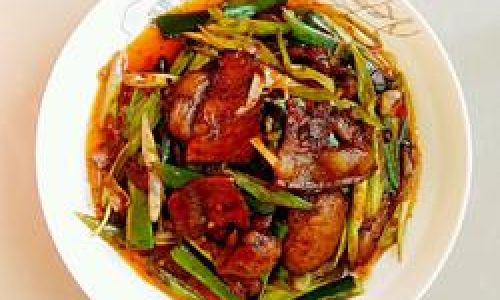
- Prep the Tofu: Boil tofu cubes in salted water for 2 minutes to firm; drain.
- Cook the Aromatics: Heat oil in a wok. Add pork, stir-frying until browned. Push pork to one side; add garlic, ginger, and black bean paste. Sauté until fragrant.
- Build the Sauce: Stir in chili flakes, sugar, and soy sauce. Pour in broth; bring to a simmer.
- Add Tofu: Gently slide tofu into the sauce. Simmer for 5 minutes.
- Thicken: Stir in cornstarch mixture until sauce coats the tofu.
- Serve: Sprinkle with Sichuan peppercorn powder and green onions. Pair with steamed rice.
Pro Tip: For authenticity, use a clay pot to retain heat and enhance flavor absorption.
Kung Pao Chicken (Gōng Bǎo Jī Dīng)
This stir-fry marries tender chicken, crunchy peanuts, and dried chilies in a sweet-spicy glaze.
Ingredients:
- 400g boneless chicken thighs, cubed
- 1 tbsp soy sauce
- 1 tbsp Shaoxing wine (or dry sherry)
- 1 tbsp cornstarch
- 1 tbsp vegetable oil
- 3 garlic cloves, sliced
- 1-inch ginger, julienned
- 6–8 dried red chilies, deseeded
- 1/2 cup roasted peanuts
- 2 green onions, chopped
- Sauce: 2 tbsp soy sauce, 1 tbsp black vinegar, 1 tbsp sugar, 1 tsp sesame oil, 1 tsp cornstarch
Instructions:
- Marinate Chicken: Toss chicken with soy sauce, wine, and cornstarch. Let sit 15 minutes.
- Stir-Fry: Heat oil in a wok. Add chicken; stir-fry until golden (3–4 mins). Remove.
- Cook Aromatics: Add garlic, ginger, and chilies to the wok. Sauté 30 seconds.
- Combine: Return chicken to the wok. Stir in peanuts and green onions.
- Add Sauce: Pour sauce over the mixture; toss until glossy. Serve immediately.
Variation: Substitute peanuts with cashews or add vegetables like bell peppers for color.
Twice-Cooked Pork (Huí Guō Ròu)
A beloved Sichuan dish featuring pork belly simmered, sliced, and stir-fried with leeks and chili bean paste.
Ingredients:
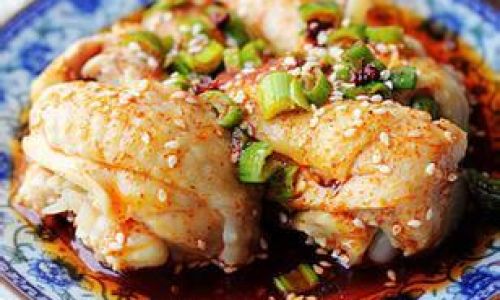
- 500g pork belly
- 2 tbsp vegetable oil
- 3 garlic cloves, sliced
- 1-inch ginger, julienned
- 2 tbsp fermented chili bean paste (Doubanjiang)
- 1 leek, sliced into 2-inch segments
- 1 tbsp soy sauce
- 1 tsp sugar
- 1 tbsp black vinegar
Instructions:
- Boil Pork: Simmer pork belly in water for 45 minutes until tender. Drain; cool and slice into thin strips.
- Stir-Fry: Heat oil in a wok. Add pork; stir-fry until crispy edges form. Push to the side.
- Sauté Aromatics: Add garlic, ginger, and chili bean paste. Fry until oil turns red.
- Combine: Toss pork with the paste. Add leek, soy sauce, sugar, and vinegar. Stir-fry 2 minutes.
- Serve: Enjoy with rice or steamed buns.
Key Technique: The “twice-cooked” method ensures melt-in-the-mouth texture and rich flavor.
Dan Dan Noodles (Dān Dān Miàn)
A street-food favorite, these noodles are tossed in a spicy, nutty sauce and topped with minced pork.
Ingredients:
- 300g fresh wheat noodles
- 150g ground pork
- 2 tbsp sesame paste (or tahini)
- 1 tbsp chili oil (with sediment)
- 1 tbsp black vinegar
- 1 tbsp soy sauce
- 1 tsp sugar
- 2 garlic cloves, minced
- 1 tbsp Sichuan peppercorn oil
- 1/4 cup chicken broth
- 2 green onions, sliced
- 1/4 cup preserved mustard greens (optional)
Instructions:
- Cook Noodles: Boil noodles according to package instructions. Drain; rinse under cold water.
- Make Sauce: Whisk sesame paste, chili oil, vinegar, soy sauce, sugar, garlic, peppercorn oil, and broth.
- Cook Pork: Stir-fry pork until crispy. Drain excess fat.
- Assemble: Toss noodles in the sauce. Top with pork, green onions, and mustard greens.
Customization: Adjust chili oil and sesame paste ratios for desired spiciness and richness.
Essential Sichuan Cooking Techniques
-
Stir-Frying (Bào Chǎo):
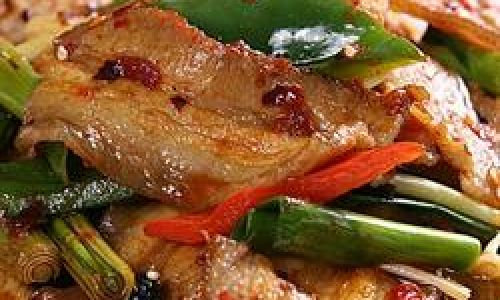
High heat sears ingredients, preserving texture and flavor. Use a carbon steel wok for even heating.
-
Dry-Frying (Gān Biān):
Cooking meat without oil until crispy, as seen in Twice-Cooked Pork.
-
Red Braising (Hóng Shāo):
Simmering ingredients in soy sauce, sugar, and spices for deep color and flavor.
-
Pickling (Pào Zhì):
Marinating vegetables or meats in vinegar, chili, and sugar for tangy, spicy accompaniments.
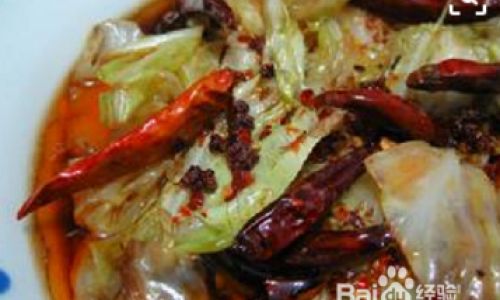
Mastering Sichuan Flavors: Beyond the Basics
- Balancing Act: Sichuan chefs master the “seven flavors”—sour, pungent, sweet, bitter, spicy, aromatic, and salty. Experiment with vinegar, sugar, and herbs to achieve harmony.
- Fresh Ingredients: Use in-season produce for vibrant dishes. Sichuan’s mountainous terrain yields unique ingredients like ya cai (pickled mustard greens).
- Spice Gradation: Adjust chili levels to suit your palate. Start with 1 tbsp chili oil and increase gradually.
Health Benefits of Sichuan Cuisine
Contrary to its fiery reputation, Sichuan cuisine offers nutritional perks:
- Capsaicin in Chilies: Boosts metabolism and reduces inflammation.
- Fermented Ingredients: Rich in probiotics for gut health.
- Vegetable-Forward Dishes: Many recipes, like stir-fried greens with garlic, emphasize fresh produce.
Conclusion
Sichuan cuisine is a journey of contrasts—fiery yet soothing, simple yet profound. By mastering its techniques and embracing its bold flavors, you can recreate the magic of Chengdu’s streets in your home kitchen. Whether you’re a novice or a seasoned cook, these recipes invite you to explore the artistry of Sichuan cooking, one spicy, tingling bite at a time.
Final Tip: Always have a bowl of steamed rice and a cooling beverage (like jasmine tea) on hand to balance the heat. Happy cooking!
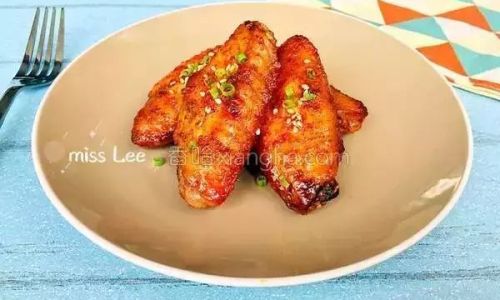

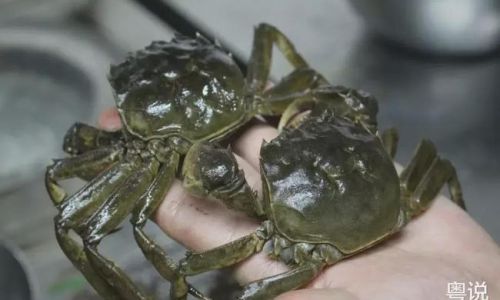

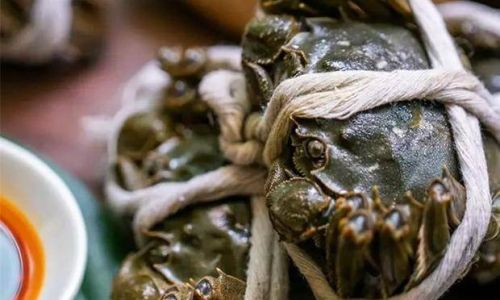
0 comments